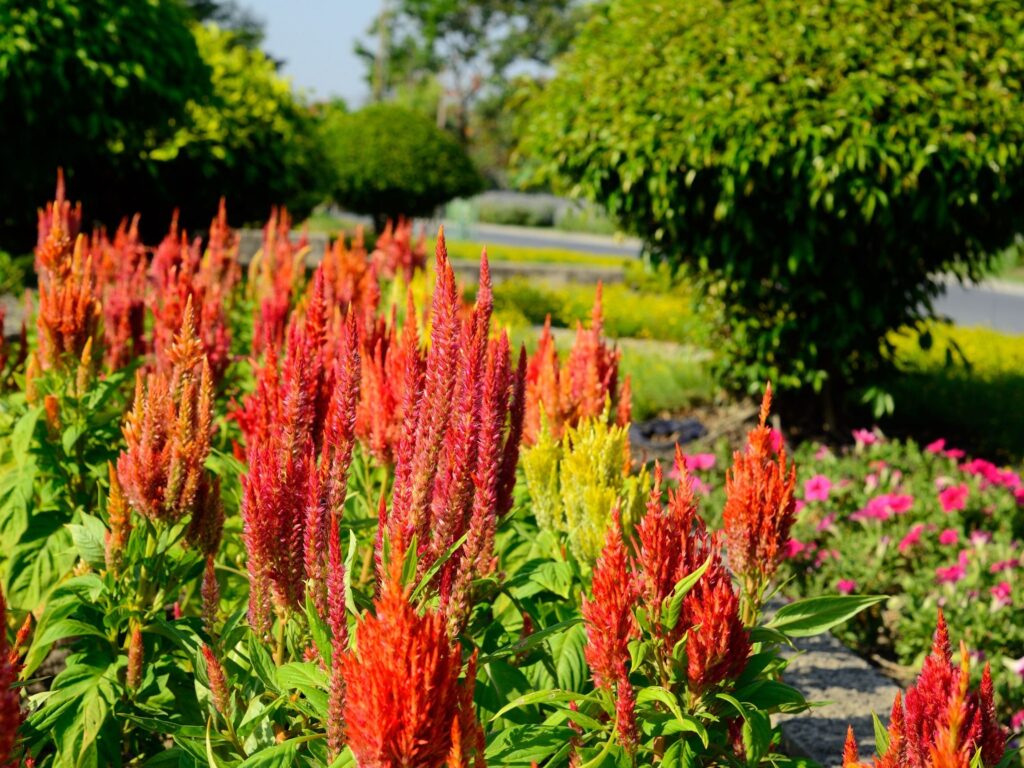October gardening checklist

Rev up and rejoice – it’s time to motor in October! Garden Day is on Sunday the 17th, giving you the perfect reason to host a little outdoor eco-celebration – #gardenyay.
Welcome spring in full swing and give your garden, potted windowsills, and patio planters some much-deserved admiration from loved ones. Also, it’s rose month! GCA’s are stocked with some serious stunners, waiting just for you. There’s much to plant, grow, and sow too, as well some easy-peasy maintenance to take care of. With compost and spades in hand, let’s get to work!
Raging for roses
Your top 5 babes available now are:
- Double Delight: Pointed, cream colour buds unfolding delicately into shades of scarlet.
- Just Joey: A hybrid apricot/orange blend tea rose with a seductively sweet scent.
- My Granny: A spreading shrub with full rosette blooms in shades of soft pink and white.
- South Africa: SA’s top performer with huge clusters of large, golden-yellow double blooms.
- Zulu Royal: Large, symmetrical blooms in deep mauve with a silver-lilac dust.
Rosey tips: Avoid wetting rose leaves in the late afternoon as this may encourage black spot and powdery mildew. Plant living mulch between your roses such as erigeron, verbena or lobularia. Remember to feed with special rose fertiliser every 4 weeks for max bloom power.
Rushing flower power
Plant and sow now
- For instant colour, go for calibrachoas with masses of miniature petunia-like flowers.
- Sun-loving annuals in seedling trays include: petunias, lobularias (allysum), gazanias,
- penstemons, Chrysanthemum paludosum and C. multicaule, Sunpatiens and celosias.
- Shade-seeking seedling trays include: New Guinea impatiens, begonias, impatiens (Busy Lizzie) hypoestes and coleus.
- Go-getter perennials for all regions are: agapanthus, gauras, nemesias, osteospermums and geraniums of all kinds. Also go for gypsophila and masses of pretty but tough angelonias. Star jasmine, penstemons, columbines and echinaceas are lovely too.
Top seedling tip: Give your seedlings the best head start in life by planting them in compost-enriched soil. When transplanting, avoid pulling them out by their stems and rather push them out from the bottom of the punnet. Pinch out their growth tips as they mature for a bushier plant.
Top sowing tip: To prevent small seeds from sticking to your fingers and clumping together, mix them with some dry sand, then sprinkle over moist soil.
Bustling hunger busters
- Carrots: Sow seeds directly from spring to autumn to ensure a continuous harvest. The soil must be cultivated deeply to make it loose and friable.
- Cucumbers: Sow seeds directly into rich soil. Plants will need sturdy stakes to keep the fruit off the ground.
- Green beans: Plant bush-type seeds that are easier to manage if your space is limited.
- Lettuce: Try oak and loose-leaf lettuce seedlings, available in trays from your GCA Garden Centre.
- Radishes: Sow small amounts directly into the ground throughout summer.
- Squashes and baby marrows:As soon as new greens emerge, thin them out to allow ample space for trailing support.
- Tomatoes and sweet peppersare also available in seedling trays now. Pinch off lower leaves when planting for a bushier, abundant yield.
- Spinach: Plant or sow several rows every few weeks to ensure a continuous supply.
- Herbs: Parsley, chives and basil seeds and seedlings can be planted/sown in the veggie patch or in pots for your kitchen garden or sunny windowsills. Check out how to start your own kitchen garden here: (link to kitchen garden article)
Edible encouragement: Feed young veggies every two weeks with a water-soluble fertiliser and keep a sharp eye on germinating weeds between rows. Set snail bait amongst strawberry plants and provide a mulch of straw, coarse clippings, or weed matting to prevent the fruit from touching the soil. Pick the fruit frequently to encourage more produce.
Board the maintenance train
- Lawns: Fix hollows and bumps by cutting out the turf in the affected area. Add or reduce soil as needed and gently replace the turf. In shady areas with barren patches, check out our handy article that’ll help you choose the perfect grass for the job: (link to shade grass article) Spray weedkiller to get rid of broadleaf weeds. Before treatment, fertilise your lawn and water well, wait two weeks before applying spray.
- Weed alert: Weeds compete with healthy crops for space, water, sunlight and nutrients, ultimately reducing your crop yield. They grow quickly and reproduce in large numbers. Seeds are easily dispersed by wind and animals, especially whilst mowing the lawn. Weeds are also hosts for pests and plant diseases, so make sure to visit your GCA for a variety of effective treatments to use.
- Succulents: Tidy up succulents like echeverias and Kalanchoe thyrsiflora, which have stopped flowering. Divide and replant into other parts of the garden.
- Fruit trees: Thin out peaches, nectarines, apricots and plums when they are about pea-size. Apply a fertiliser that’s high in nitrogen and potassium to promote plump, luscious fruit. Continue spraying and baiting against fruit flies and codling moths.
- Pests: Put out snail taps and cutworm bait to protect all new seedlings.
- Anti-fungal: Encourage strong root systems and combat fungal disease by watering your garden early in the morning, instead of in the evenings.
- Re-potting: Ferns are ready for new homes! Repot and transplant all ferns now, followed by a feeding every two weeks with a liquid fertiliser mixed at half strength.
There you have it – your October to-do list is complete. Life is a garden is always on your side, and we want to see you take charge this spring.


Sorry, the comment form is closed at this time.